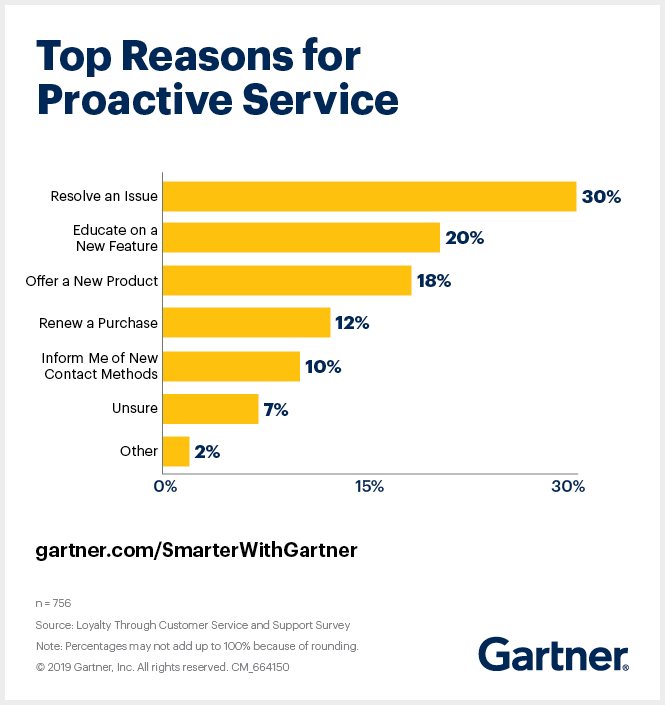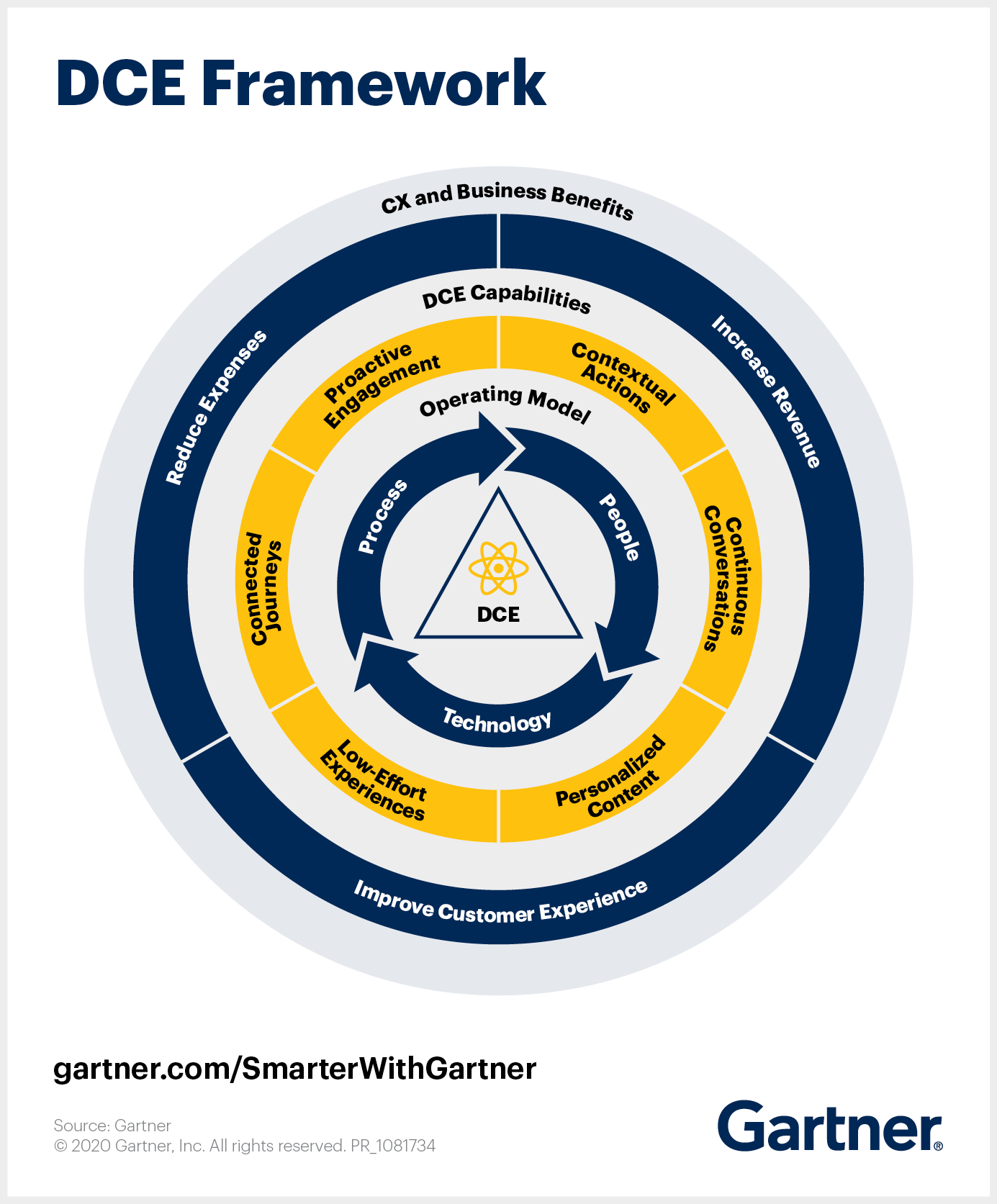Customer service and support leaders must employ dynamic customer engagement to enable a more personalized customer experience.
Customer service has always been highly reactive. In fact, most service organizations operate in a reactive manner, requiring customers to exert significant effort to navigate multiple service channels, often unsuccessfully. Unfortunately, this leads to low self-service containment and customer dissatisfaction.
“Reactive service experiences place the burden on customers to find the best channel for resolution”.
Gartner research reveals that a dynamic customer engagement (DCE) strategy enables customer service and support leaders to transform their service experience through personalized proactive conversations with customers.
These negative effects extend well beyond cost and the service experience, impacting the organization’s revenue and its ability to mitigate disloyalty, maximize wallet share and gauge overall profitability.
The ROI of a proactive customer service approach
In a Gartner survey of more than 6,000 customers, only 13% of respondents report any type of proactive customer service. However, that same research shows that proactive customer service results in a full percentage point increase in the net promoter score, customer satisfaction score, customer effort score and value enhancement score.
“Shifting from reactive to proactive conversations is a game-changer, delivering nearly effortless experiences, reducing cost and increasing customer lifetime value,” says John Quaglietta, Senior Director Analyst, Gartner.
Shifting to dynamic customer engagement
Customer service leaders must implement DCE to overcome the drawbacks of reactive experiences and move to a proactive service approach. DCE enables organizations to deliver differentiated service experiences. It helps service organizations transform data into insights to deliver next best actions to customers and transform the customer experience.
Before implementing DCE, customer service and support leaders responsible for improving the effectiveness of digital, self-service and assisted service channels should consider these actions:
- Evaluate the potential economic and customer experience impacts of DCE on the organization by meeting with peers and experts.
- Partner with IT to identify gaps and build a technology roadmap to support implementation. Then assess current-state technology architecture and data management capabilities against DCE requirements.
- Collaborate with human resources to assess existing organizational resources; conduct a talent and skills gap analysis; and develop a plan to attract, hire and retain the additional resources required to implement and operate DCE.
- Develop and champion the DCE business case to secure approval and prioritize the investment necessary for implementation.
As service differentiation becomes more than a competitive advantage, customer service and support leaders need to rethink how they approach the service experience. Customer service expectations are increasing, and every interaction is an opportunity to increase loyalty and mitigate disloyalty. DCE allows service organizations the flexibility to address increasing service expectations and economic impacts while also increasing overall organizational resiliency.






































